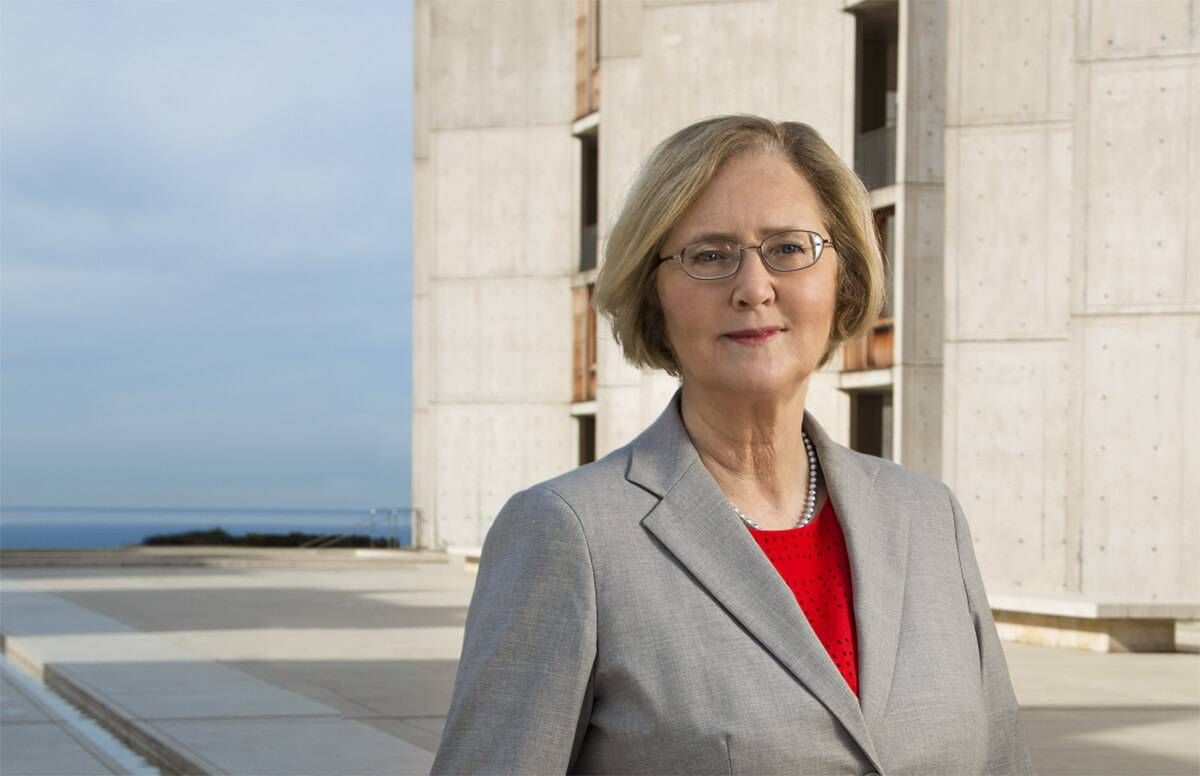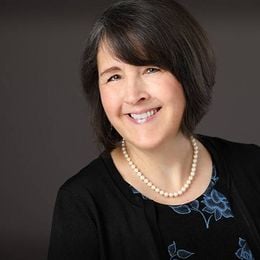Elizabeth Blackburn: Influencer of the Year
Her research shows we can have a profound impact on how we age
As a child, Elizabeth Blackburn did not see her destiny in the stars. She saw it up close, in her own room.

“When I was a teenager, I had a fascination for awhile with amino acids,” said the 68-year-old Nobel Prize-winning molecular biologist. “I drew their chemical structures on huge sheets of paper and plastered my bedroom wall with them.”
She also picked up insects “and other little creatures” and examined them, she said. As a pre-teen, Blackburn read a biography of Marie Curie written by Curie’s daughter. “I knew at once that I wanted to belong to the often-heroic world of science,” she recalled.
Not only does Blackburn now belong to that world, she has become a giant in it. Her work has focused on telomeres, the protective ends of chromosomes, and how they may predict the aging process. With health psychologist Elissa Epel, one of the 2016 Next Avenue Influencers in Aging, Blackburn wrote The Telomere Effect: A Revolutionary Approach to Living Younger, Healthier, Longer. The book, published in January, describes how the way we live influences our “healthspan,” or the length of time we live healthy and active lives.
The telomere research earned Blackburn a Nobel Prize in Physiology or Medicine, along with colleagues Carol W. Greider and Jack W. Szostak.
2017 Influencer of the Year
Next Avenue is very pleased to name Blackburn our Influencer of the Year for 2017 among our Top 50 Influencers in Aging.
A native of Tasmania, Australia, Blackburn earned her Ph.D. from Cambridge University and did postdoctoral research at Yale. She joined the molecular biology faculty at the University of California at Berkeley in 1978. In 1990, she moved to the department of microbiology and immunology at UC San Francisco.
When she got her start, Blackburn was one of a slim minority of women in the male-dominated world of scientific research. Becoming a mother in 1986 gave her a particular sensitivity to later research on mothers caring for children with chronic diseases, she told The New York Times in a 2013 profile. The mothers of sick children had shorter telomeres — a result similar to those of people taking care of spouses with dementia, the article said.
In January 2016, Blackburn became the first female president of the Salk Institute in La Jolla, Calif., which describes itself as a group of scientists who “push the frontiers of discovery in fields such as cancer, neuroscience, aging and plant biology.”
Upon her appointment, the institute’s board chairman, Irwin M. Jacobs, said, “Few scientists garner the kind of admiration and respect that Dr. Blackburn receives from her peers for her scientific accomplishments and her leadership, service and integrity.”
In Her Own Words
We talked recently with Blackburn about her life and work:
Next Avenue: How and when did you initially become interested in research about telomeres?
Elizabeth Blackburn: When I was a Ph.D. student at Cambridge University, I became interested in how to sequence DNA. I carried that interest into my postdoctoral research at Yale University. At that time, not much was known about chromosome ends, called telomeres, but I was determined to understand their molecular nature. I’m proud to say I was the first to describe it as consisting of motifs of particular DNA building blocks, repeated many times, over and over, on every chromosome end.
What is it, in particular, that drives your fascination with the topic?
I’ve always wanted to understand how living things work. Telomeres play crucial roles in the way cells operate, age and die, and thus affect every living creature with linear chromosomes, ranging from fungi and plants to us.
Most researchers don’t write books for a general audience. What motivated you to write The Telomere Effect?
My co-author, Elissa Epel, and I, along with many others, were uncovering important information about how applying the science of telomeres could improve well-being and reduce the chances of chronic disease. But this set of knowledge was scattered across hundreds of scientific journals, often in complex, difficult-to-understand language. We decided to take that knowledge and present it in a readable format.
In short, we wrote the book to put important information into the hands of the public. It’s a good resource for making informed choices about how we live our lives.
What are the most important things individuals can do to gain more years of good health, or increase their “healthspan?”
At an increasing pace, studies are appearing to demonstrate that exercising regularly, eating nutritious foods, getting ample sleep, managing stress and engaging in positive social interactions all support telomere maintenance and therefore contribute positively to healthspan.
Do you follow your own advice? What do you do for exercise?
I definitely try to. I pursue work that I enjoy. I take an energetic walk along the beautiful Pacific shoreline on the way to my office each morning and on my way home in the evening. I attempt to eat foods that taste good and are also good for my body. And I find time every day to appreciate my family, whether at home or at a distance, as well as my friends and my associates.
Why do you believe your work is important?
Studying telomeres is important because they’re critical to some of the most profound questions in biology: How is our precious genetic material protected? And, why do cells stop multiplying and, to extrapolate from that, why do organisms lose their health and vigor? Currently, we’re uncovering details about how telomeres — and a crucial enzyme I co-discovered, telomerase — are linked with cancer and aging and aging-related diseases, such as stroke, osteoporosis, diabetes and cardiovascular disease. We’re also looking for ways to modify this link in order to combat or prevent disease.
Where do you believe the science of aging will be in five or 10 or 20 years?
As the world’s population ages and expands, I believe we will employ new parameters for defining and measuring health. In other words, your chronological age may be far different from your biological age. I also believe that adding telomere maintenance measures into the mix in precision medicine will provide better diagnostic and prognostic biomarkers. These will guide optimal, personalized strategies for delaying the onset of chronic disease and extending healthspan.
What particular milestones do you want to see?
I would like to see our governments arrive at effective, evidence-based approaches for developing lifestyle recommendations, dietary guidelines, food production systems and public health education. I would hope to see older individuals enjoying a robust healthspan and continuing to contribute to society as valued participants.
What else would you like our readers to know about you or your work?
That fundamental biological research — the kind performed at the Salk Institute, where I am president — is critical to attacking the big questions we need to confront for improving our planet and the health of people living in it. Before we can fix something, we have to understand how that something works. So we investigate at the cellular and molecular levels; then we study systems and how systems work together.
Now we’re able to do extraordinary things, such as harness the immune system to fight cancer and reprogram cellular signaling pathways to preempt disease. The incremental steps of discovery we make each day are destined to have a tremendous impact on the future lives of our families and loved ones.


